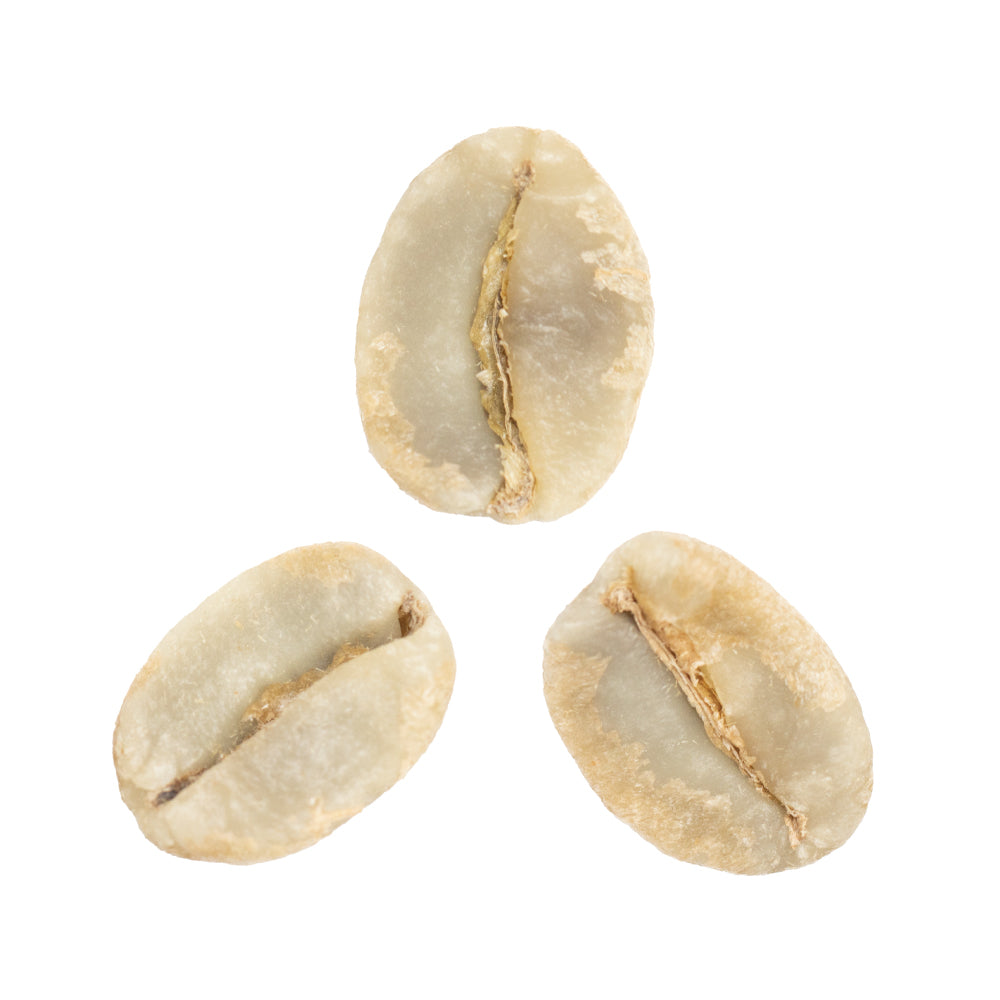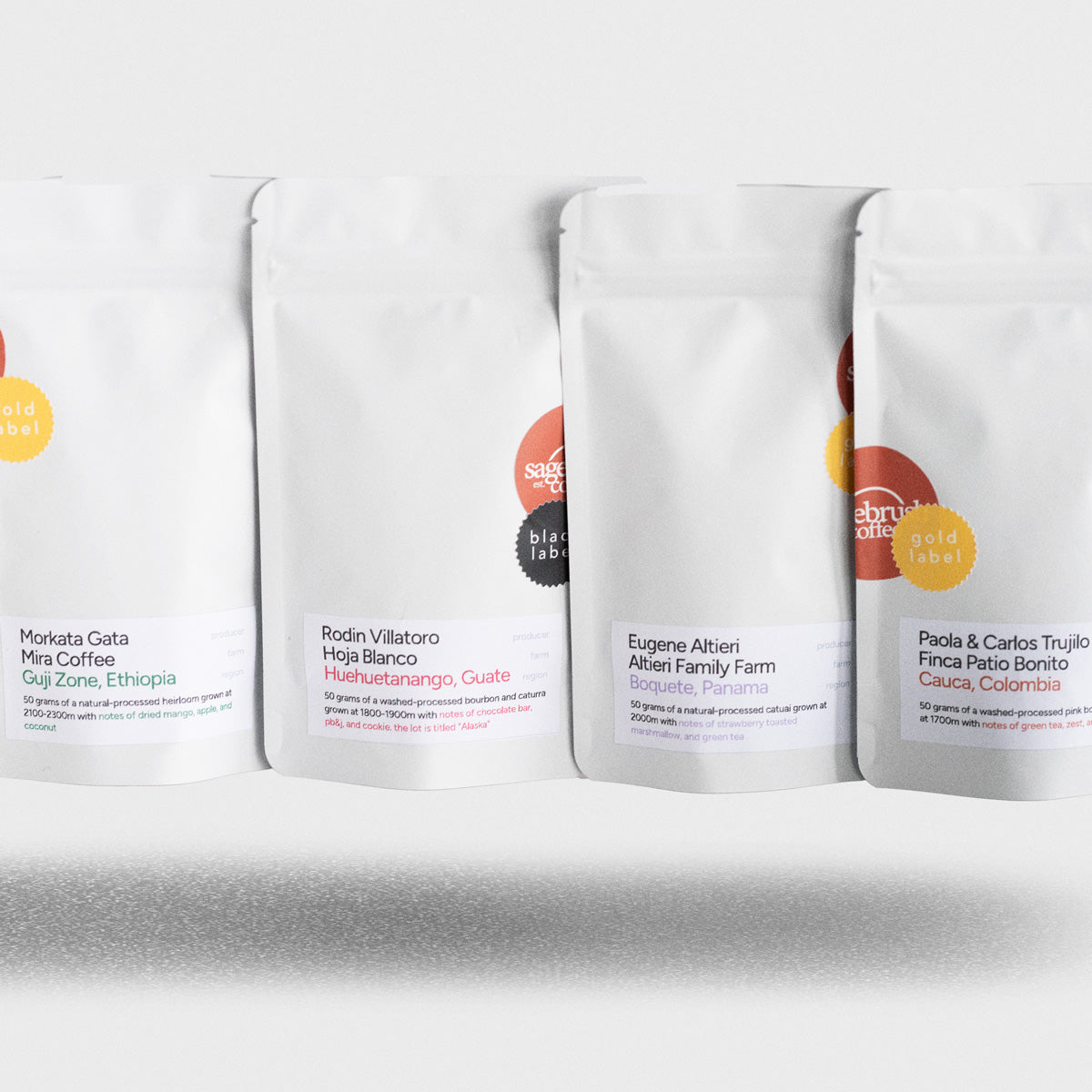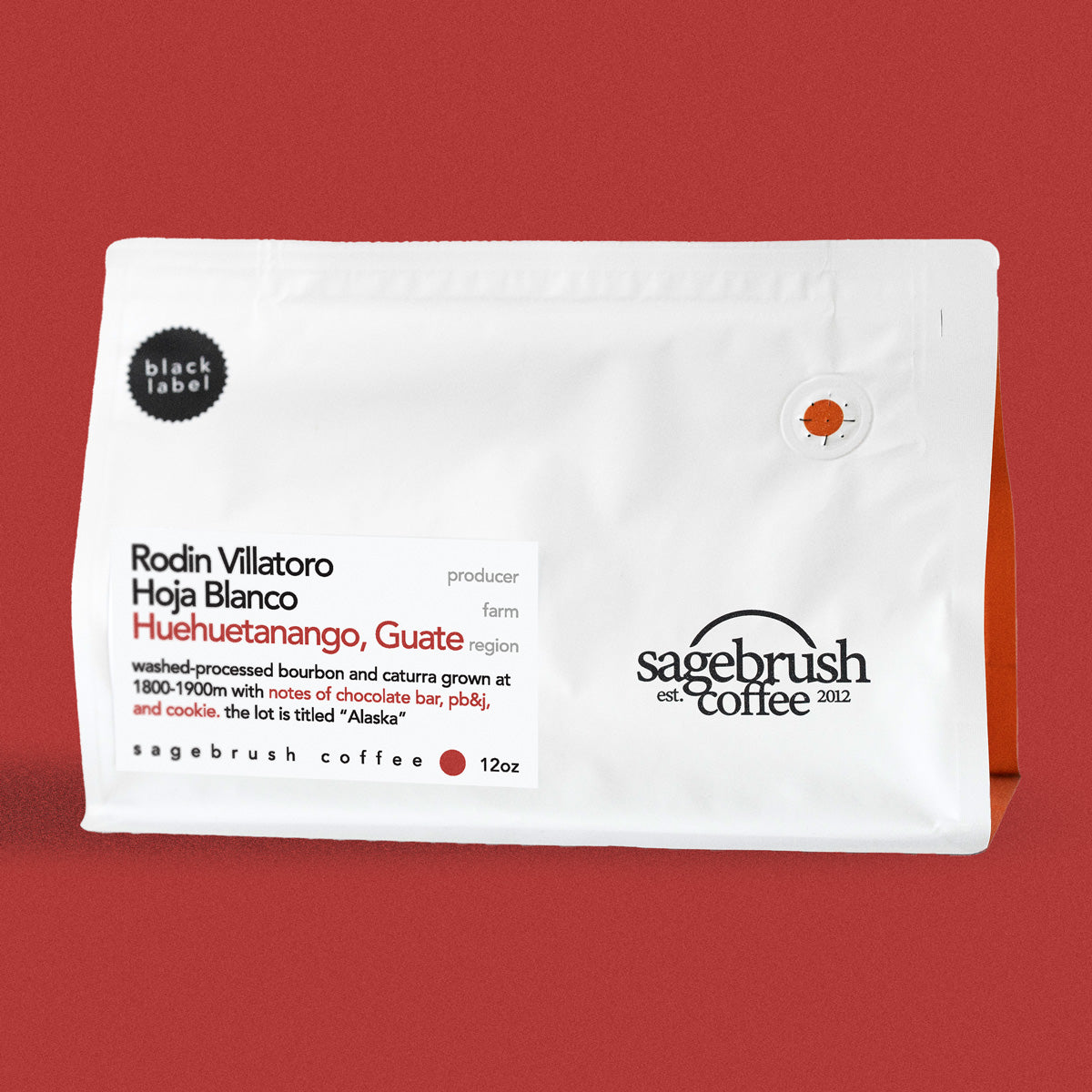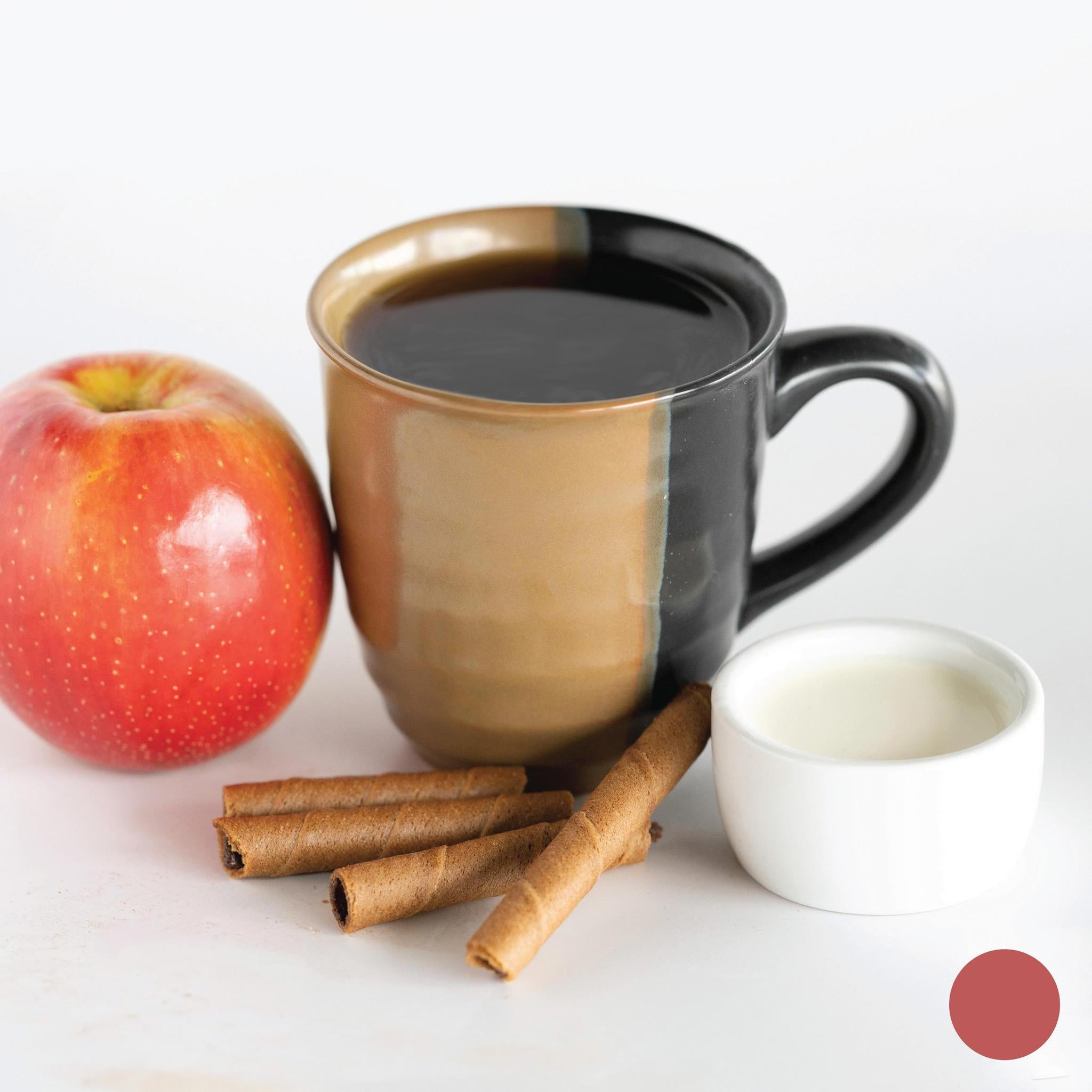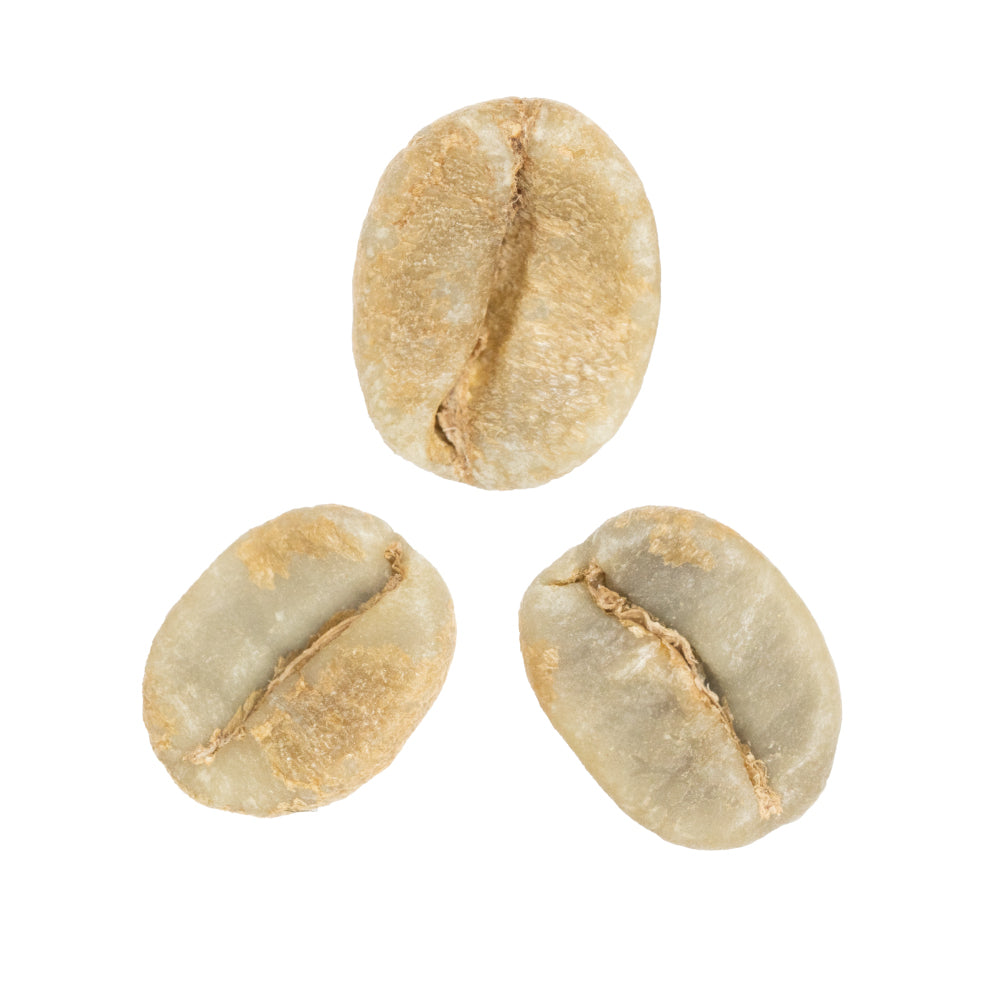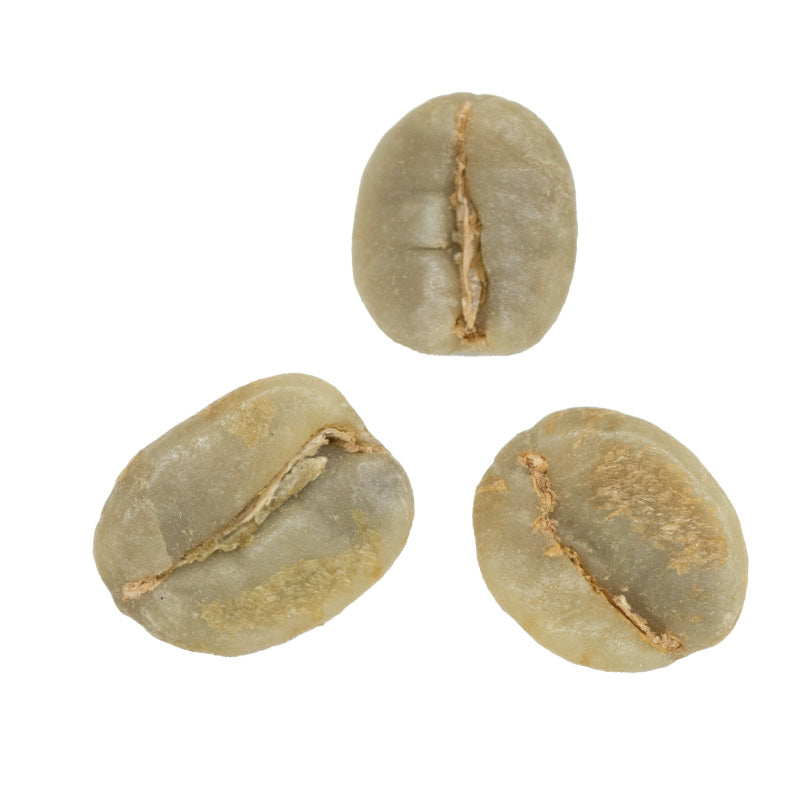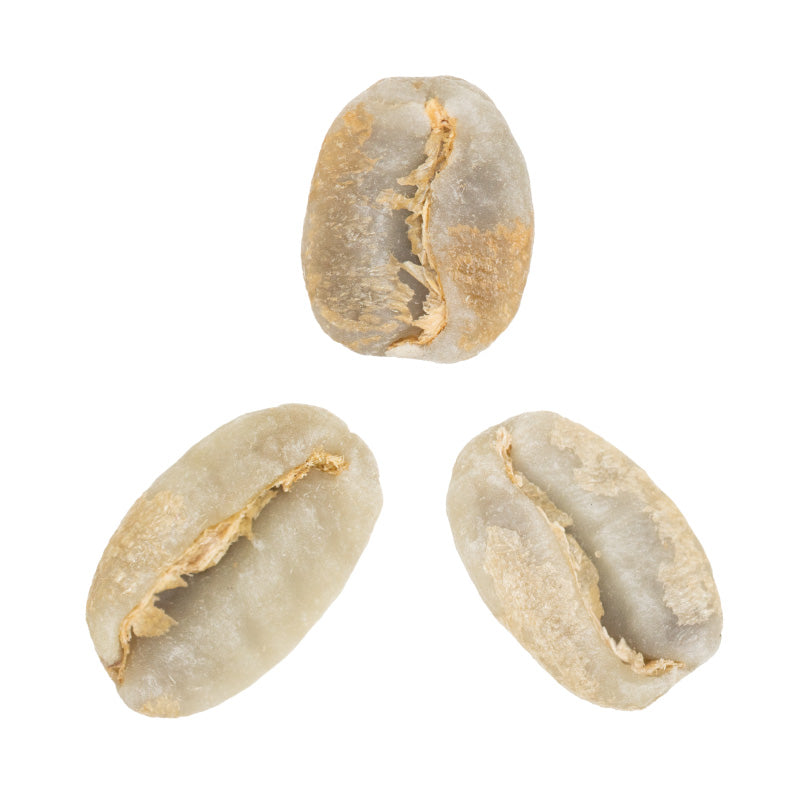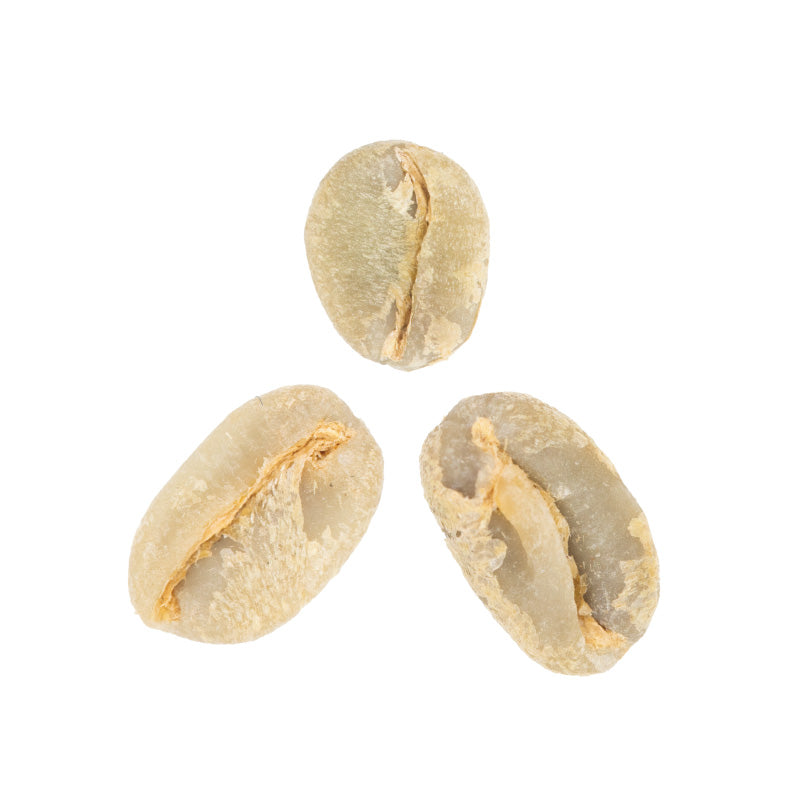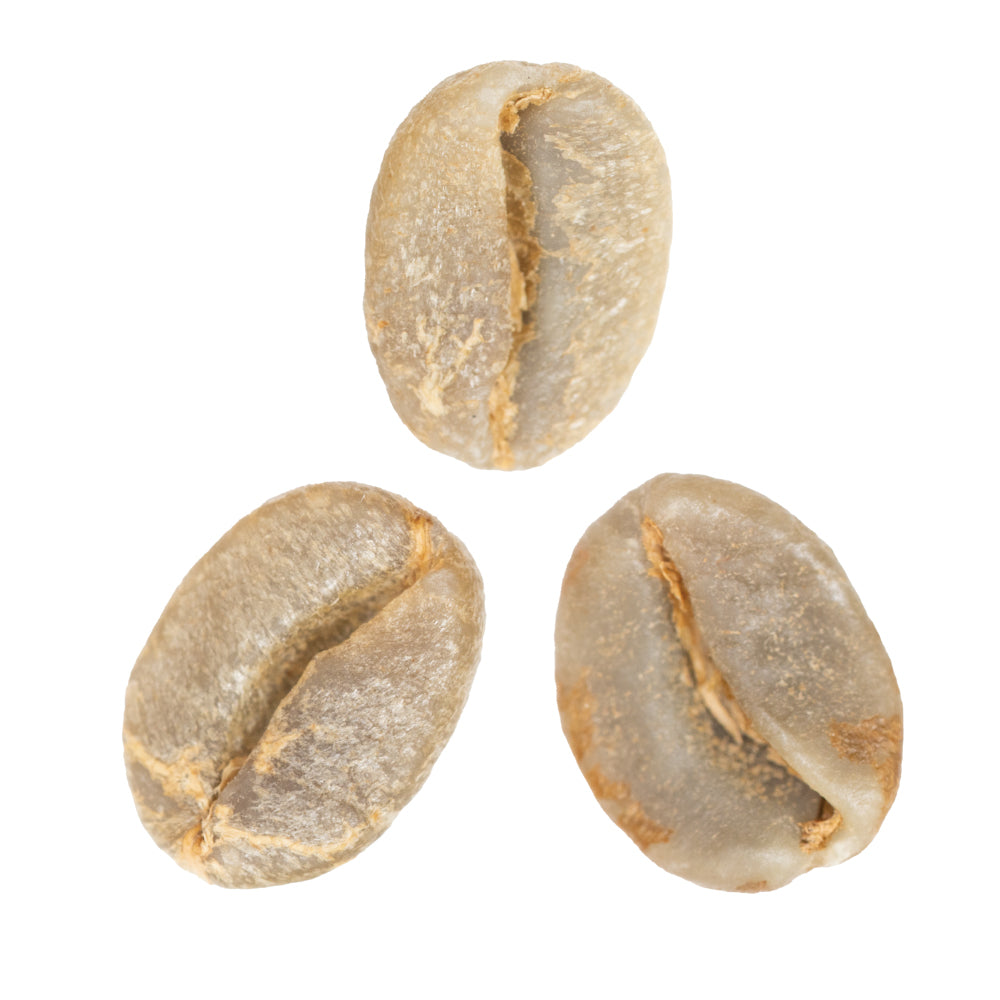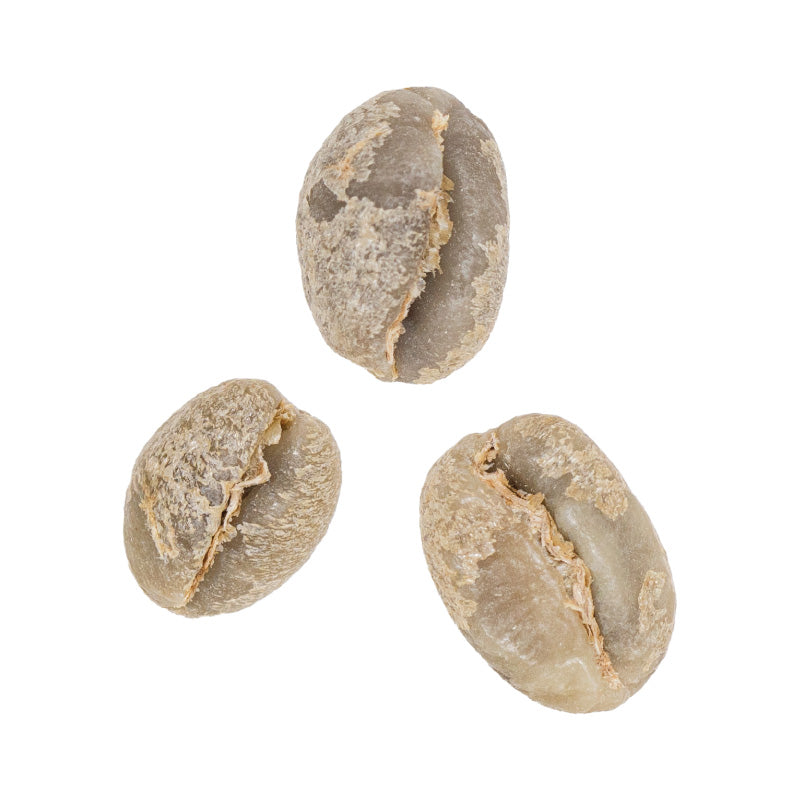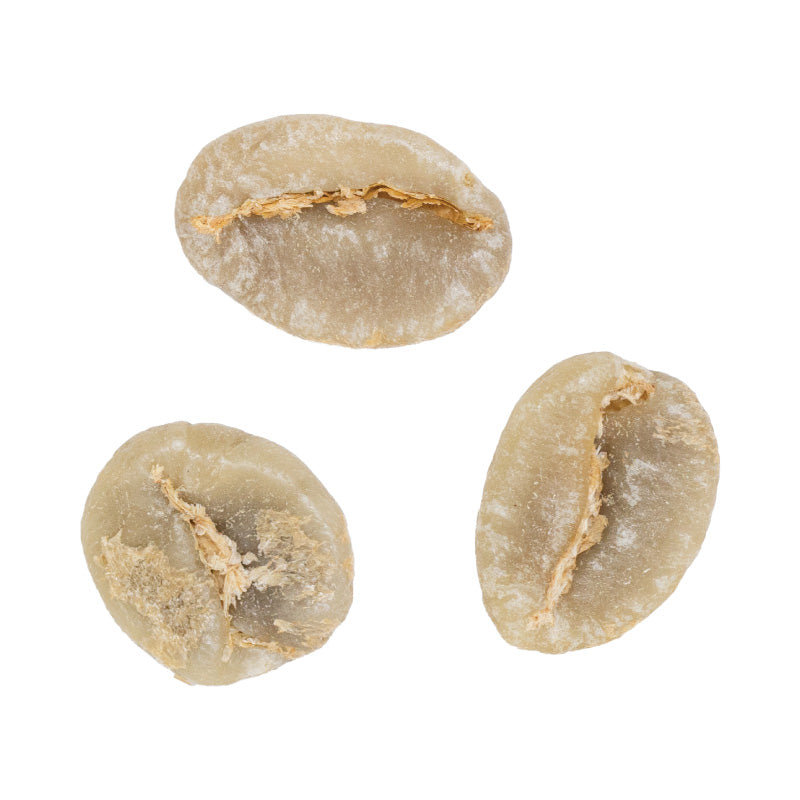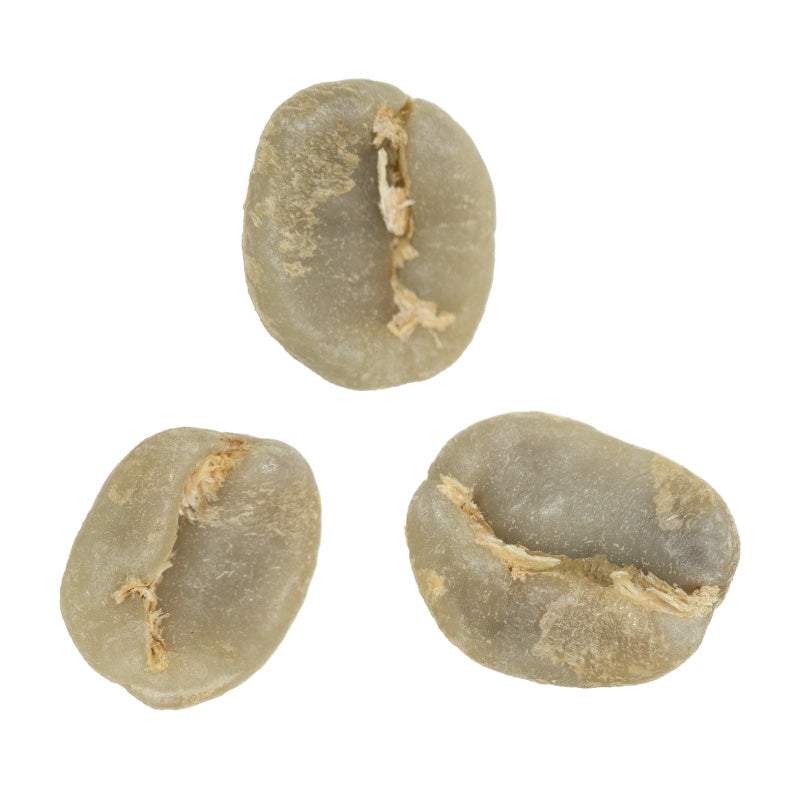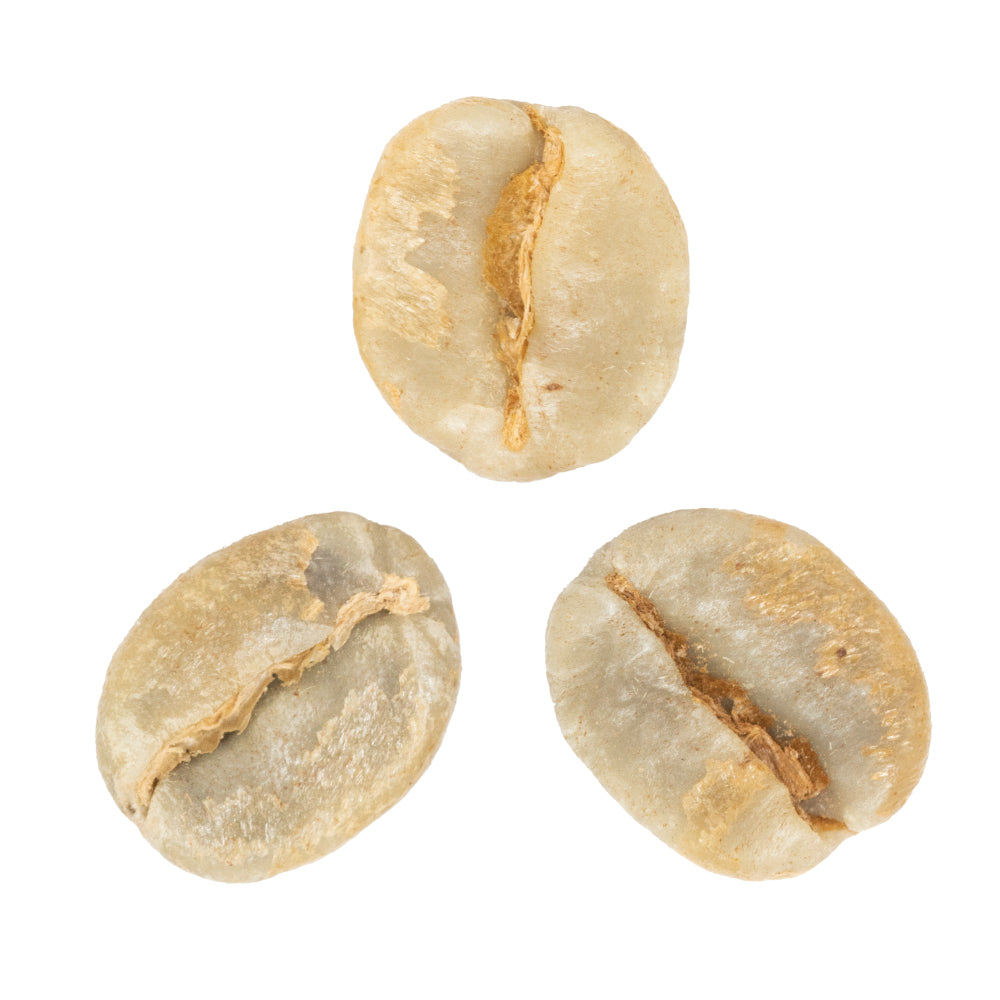Coffee Varieties Guide •
Read our Coffee Varieties articleWhat Are Coffee Varieties
Believe it or not, coffee isn’t a bean–it’s a seed!
Every coffee bean begins as the seed of a bright red cherry growing on the Coffea Arabica plant. Those seeds are then extracted, processed, and packaged to become the green coffee “beans” we all know and love.
But just like apples, Coffea Arabica has many varieties.
All apple trees belong to the same species, but the fruit they produce differs in texture, acidity, sweetness, and color (think, Granny Smith vs. Red Delicious).
Similarly, all coffee plants belong to the Coffea Arabica species, but there are different varieties that produce fruit with different flavor characteristics.
How did so many varieties come about, you might ask?
The answer is two-fold: 1) there are still thousands of unclassified varieties growing wild in Ethiopia–the birthplace of Coffea Arabica–today. These varieties are known as “heirloom” coffees or “regional landraces”.
2) From the very first variety that was discovered in Ethiopia and planted all over the world, an entire family tree of specialty coffee has been birthed. These varieties came about through natural mutations, natural hybrids, and human-engineered hybrids.
The Bourbon variety comes from that second one.
The Bourbon Family Tree
Way back in the 1500s in Ethiopia, a single variety of Coffea Arabica (Typica) was taken to Yemen. From there, it was planted all over the world.
It eventually was carried to Bourbon (pronounced: “boar-bone”--today, the island of Réunion) by French missionaries in the early 18th century and after it was planted, something amazing happened!
Growing in the soil of Bourbon, the plant naturally mutated. A change in its genetic code transformed this version of Coffea Arabica into a bushier and 30% more productive plant that produced a sweeter-tasting, more complex cup of coffee!
But the story of Bourbon doesn’t end there.
While technically Typica is Bourbon’s “parent”, together, these two varieties have given birth to most of the common varieties we see today.
Depending on where they were planted, Typica naturally mutated into other varieties like the large-beaned Maragogipe. Bourbon also developed its own natural mutations, such as Caturra, Villa Sarchi, and Pacas.
Growing in the same region in Brazil, Typica and Bourbon naturally cross-bred to create the delicious and even more productive Mundo Novo variety. Other varieties have come about as the result of cross-breeding these varieties–like Catuai (Mundo Novo and Caturra) and Pacamara (Maragogipe and Pacas).
And that doesn’t even cover the human-engineered hybrids that have used varieties that trace back to Typica or Bourbon to create even more new varieties!
And yet, in the midst of all these newcomers, Bourbon is still one of the most popular varieties grown today. The reason for that all comes down to taste.
Flavor Profile of Bourbon
A coffee’s variety significantly impacts taste. Although, to be fair, there are a lot of other factors at play as well.
Genetic differences between varieties make some taste sweeter than others–like our apple analogy again! Ethiopian landraces, for example, have a multitude of bright and fruity notes because of their high genetic diversity as opposed to a much more chocolatey Bourbon.
Terroir also comes into play here, as the soil and elevation where a particular coffee is grown affects how it tastes. For example, a Gesha grown in Panama emerges with a different flavor profile than a Gesha grown elsewhere.
And finally, processing affects a coffee’s taste tremendously. Whether that coffee was washed or processed naturally–dried with the fruit still on–will make a difference when it comes to sweetness and acidity.
Bourbon’s flavor profile tends to have a chocolatey, caramelly sweetness balanced by bright acidity and complexity. Depending on these other factors, it can also have whispers of nuttiness or fruit.
For example, a Central American Bourbon might feature more chocolatey, caramelly notes whereas a Bourbon from Africa might be more floral and fruity.
In specialty coffee, the Bourbon variety is legendary.
Though new varieties emerge all the time, Bourbon is still one of the most popular varieties out there for farmers and consumers alike purely because of the exceptional cup quality it produces.
If you haven’t already, try this delicious variety and see for yourself why, of all the varieties, Bourbon has the most staying power.
Explore Bourbon Coffees
Anny Ruth • Yellow-Honey-Processed Red-Bourbon



